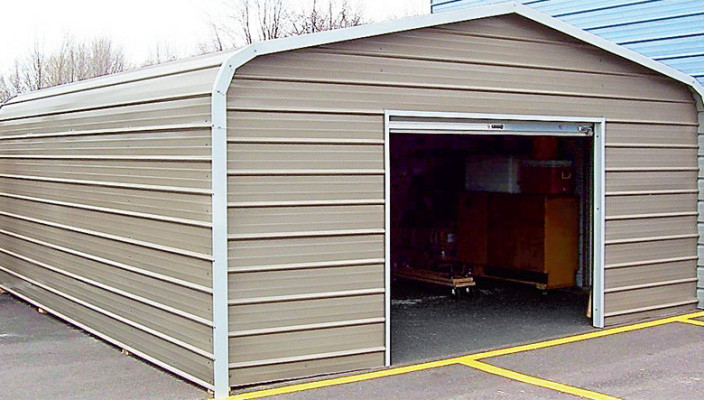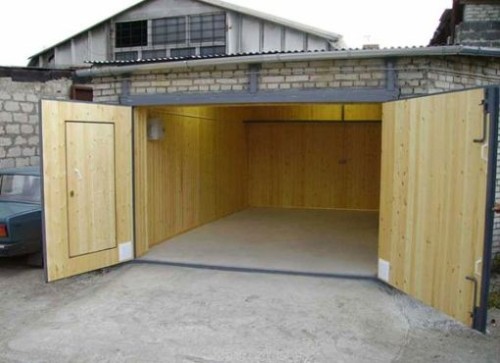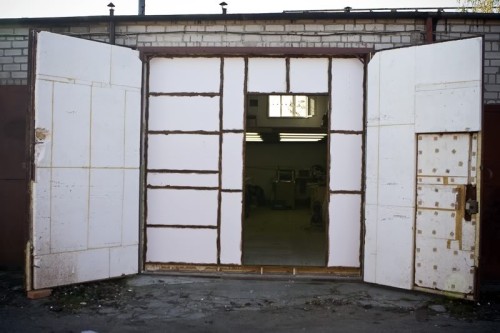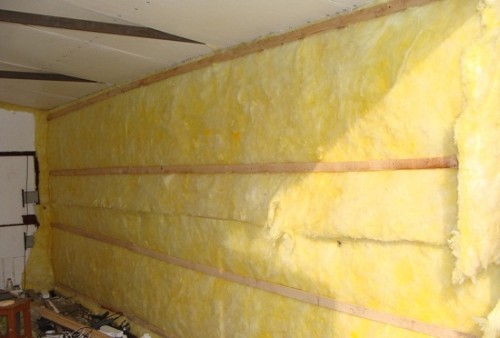The garage for the car owner without a shadow of doubt can be called the second home. Quite often in this place you have to spend time, paying attention to your "Iron Horses". Therefore, the garage should be dry and warm. The favorable conditions for storing the car have a positive effect on its operational characteristics, as well as on the safety of the main components and units. In the conditions of harsh winters, a warmed garage is a pledge of a smoother engine and fuel economy on the heating of the car. In addition, after insulation, the formation of condensate is significantly reduced, which can cause corrosion of the body.
Content
Basic moments
In general, it is worth noting that the insulation of the garage is the process is quite necessary and useful. However, as in any other case, it is impossible to overdo it. Some motorists believe that the temperature inside this room should be like in a residential. However, it is not. If the difference between the temperatures inside and outside will be more than 30 ° C, moisture can accumulate on the car body surface, which is very harmful to it. There should be a positive temperature in the garage, but it should not differ significantly from external. An ideal indicator for storing a car is considered to be +5 ° C.
Some motorists make a rather frequent error when carrying out work on insulation - trying to limit the access of cold air inside, they close up not only all the slots and holes, but also ventilation channels. It is categorically impossible to do this for several reasons:
- First, coming in winter in your car, you will be guaranteed to bring a small amount of snow on the shrinkles and mudguards, which will begin to melt at the plus temperature. Since there is no ventilation in the garage, the moisture will accumulate, thereby harming the body.
- Secondly, it is worth remembering that the use of a car is associated with the combustion of highly toxic fuel, so the system is natural, and better forced, ventilation must be necessarily, especially if the garage adjoins the house or is on the technical floor.
How best to do the insulation of the garage. Outside or inside
As a rule, most motorists have the answer to this question unequivocal - outside. After all, insulation from the inside beautifies a large number of useful areas. However, everything is not so simple. If, with the insulation of the garage from the inside, you can use almost any material, including mineral wool or film reflecting thermal insulation, then when it works outside the choice of material is limited. In addition, if the garage is not protected, then the outer thermal insulation may be damaged by hooligans.
When insulating inside it is worth paying attention to the toxicity and fire safety of materials, because in the garage you will still spend some time. In addition, there are flammable liquids in this room. And this eliminates the possibility of insulation with some materials.
Internal works are not as limited in time as external, because inside the risk of increasing precipitation or a detrimental effect of sun rays.
In any case, when choosing a method of insulation, it is necessary to analyze all factors and stop at the most optimal version.
What to warm the garage. Selection of material
Now in the market in the segment of insulation materials is really a large selection. The most popular among them are:
- Mineral wool. It is well suited for both internal and outdoor work. This material has excellent sound-absorbing and thermal insulation properties, which makes it one of the best thermal insulation for the garage adjacent to the house. In addition, mineral wool allows the premises to "breathe", which helps to keep humidity at an optimal level. For internal work on insulation, material is used with a density of 120 to 180 kg / m 3, for external - 200-240 kg / m 3. This wool is produced in the form of mats or rolls. The best in its heat insulating qualities is the one that was produced on the basis of basalt fibers.
- Glasswater. This is a rather old material. Although the price for it in comparison with others is quite low, it has a large number of shortcomings. First, it is difficult to mount it. It is necessary to do this with the use of personal protective equipment, since when entering eyes and skin, glass gamble can cause severe injuries. Secondly, it does not tolerate humidity. From moisture, its layers are coming and losing their heat-insulating properties, so it must be covered with a layer of vapor barrier. Now the glass gamble is practically not used.
- Styrofoam. The most popular material for the production of work on the insulation of the walls of the garage. It has a lot of positive properties - is available at a price, easily mounted, has excellent thermal insulation qualities, no moisture is afraid, does not rot. The service life of the foam can reach 40 years. The most popular insulation is the extruded polystyrene foam. The disadvantages of the foam can be attributed to high flammability airproof and fear of sunlight. As for the flammability, the garage is best to choose a self-fighting polystyrene foam of the brand PSB-s. He himself goes out in the absence of a source that supports burning. The problem of exposure to sunlight is solved by applying the layers of primer and plaster.
- Reflective thermal insulation. One of the relatively new materials that is gaining more and more popularity. It consists of thermal insulation from the layer of polished foil and the polyurethane foam layer. This material is considered a practically ideal solution for the inner warming of the garage. With its small thickness, it has excellent thermal insulation properties. Due to the reflective foil surface, infrared radiation is evenly distributed throughout the range of the garage, providing almost the same temperature.
- Heat insulation paint. This is a rather revolutionary material. It is a liquid mixture, which includes acrylic polymers, synthetic rubbers and coloring pigments. With a small thickness of the layer, such isolation has excellent heat conservation indicators. If you compare such paints with mineral wool, then a layer of 1 mm in its efficiency is 50 mm basalt wool. In addition, this material will be able to serve as an additional anti-corrosion coating for metal or wood, so the insulation of the metal garage in such a technology will protect it from corrosion. An attractive aesthetic appearance painted with painted paints.
Outdoor insulation of a garage of foam
Since this technique is the most popular, let us dwell on it. For insulation, it should be selected extruded polystyrene foam 50 mm thick. Make such a garage warming with their own hands is not difficult, having initial construction skills. Calculating the area of \u200b\u200bthe walls of the construction, and knowing the area of \u200b\u200beach plate of expanded polystyrene, you can calculate the need for material.
For the production of work we will need:
- Styrofoam.
- Primer for the stone of deep penetration.
- Glue for foam.
- Ground mixture under the plaster.
- Fiberglass reinforcement grid.
- Stucco for external work.
- Special dowels (fungi at least 120 mm long).
- Construction tool.
Phased work order:
- First, we produce surface preparation. It should not have remnants of old plaster, stains, dust, oils, paints. They must be removed. All detected defects in the form of chosel or humps with spit or delete. After cleaning the surface of the walls, they must be projected. Fortress do not regret.
- Next we get glue for foam. It must be two consistencies - jelly and creamy. The first is applied to the surface of the wall, the second - on the plates of foam.
- Material glue up in a checker order. That is, each subsequent layer is attached to the shift by ½ panel length relative to the previous one.
- After laying the foam and drying the glue, it is fixed with special dowels. Each plate of material is fixed in the middle. At the junction of 4 plates, 1 dowel is attached, which will keep them all. Under the cornice and in the corners of the dowels are installed in a step of 300 mm.
- The first layer of the leveling mixture is applied to the fixed material to which the fiberglass mesh is stacked. The second layer is placed directly on the grid. After its drying, a special primer is applied, thanks to which the plaster will be held over a large amount of time.
- The primer is maintained, and the plaster is applied on top of it, which is subsequently painted specially facade paint.
When performing data, it is necessary to ensure their step in chance. The fact is that the foam is afraid of sun rays, so after installing it, it is immediately attached, the next day the grid is mounted, the primer is applied and the next - plaster. Such deadlines are still associated with preventing the transfer of the primer, because in this case the plaster will be kept much worse. Therefore, work gradually in such a quantity in order to finish everything for 3-4 days. Keep the foam is needed in a dark place, since under the sun he loses its properties, even being in a pack.
Insulation of the garage from the inside
For internal works, you can use both foam and mineral wool. The order of work for foam is the same as in external work, and cotton can be mounted much easier. Overwarm plars made of wood or profile are attached around the perimeter of the walls. The space between them is filled with mates of mineral wool, and on top of the insulation layer is closed by WHP, OSB sheets, and others that are attached to the installed waterproof supports. Warming the garage gate is better to produce foam and close the sheet material.
All process technology can be seen by looking at the Garage Warming Video:
























